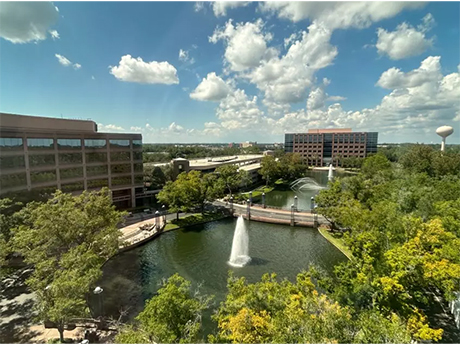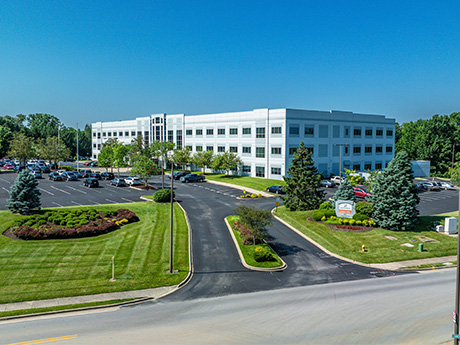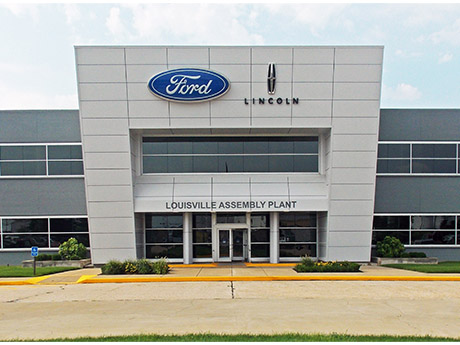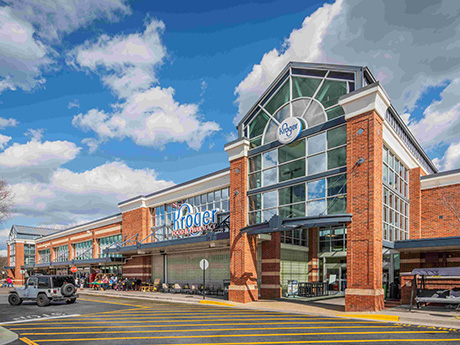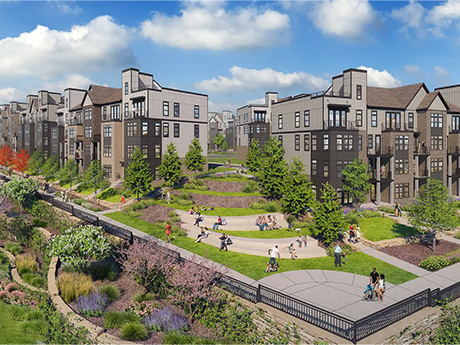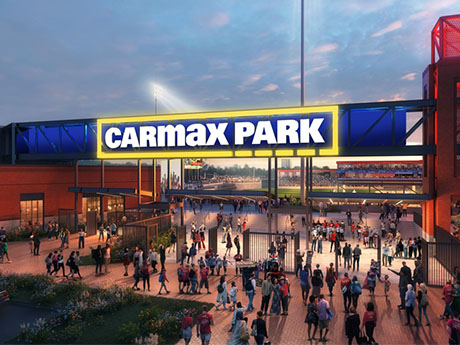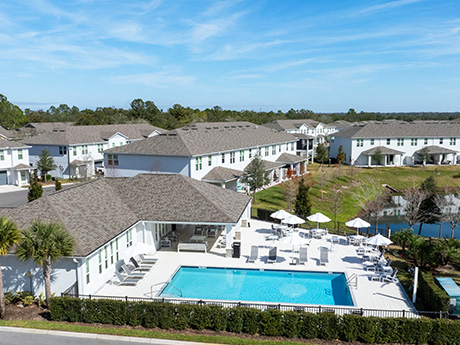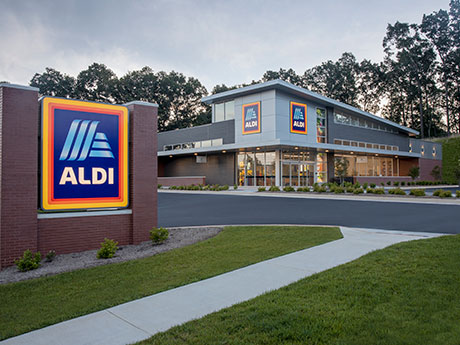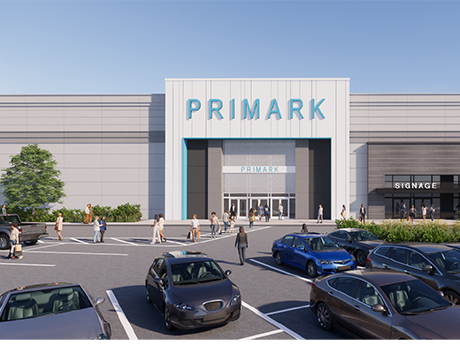In the fourth quarter of 2024, the Orlando office market had the first quarter of positive absorption in four years, according to a recent Colliers market report. The market, like many across the nation, has navigated a period of recalibration in the wake of the pandemic and evolving work trends. Yet, a shift in tenant activity has signaled renewed leasing demand across the office landscape. In the fourth quarter, net absorption in the Orlando office market reached a positive 95,843 square feet. This is a significant improvement compared to the same period in 2023, which had a negative absorption of 297,714 square feet. Interestingly, it is the submarkets outside of Orlando’s central business district (CBD) that are shining. This is evident in two recent deals that are having a profound impact on the market. In December, we represented the seller when Charles Schwab purchased the Maitland Summit Office Park for $122 million. This was the largest office deal in Central Florida since 2021 and removed 500,000 square feet of Class A office space from the Maitland submarket, which is about 10 miles north of downtown Orlando. Around the same time, Mitsubishi signed a lease for 109,000 square feet in Lake …
Southeast Market Reports
Louisville is a city full of history, charm and grit. We’re the birthplace of Muhammad Ali, home to the Kentucky Derby and the heart of America’s bourbon culture. As our city has grown, so have its business opportunities. Louisville’s geographic location, its logistics network and its diversified economy have attracted significant investment from global businesses to set down roots in recent years. In 2023, Louisville was named as a top 5 U.S. metro for economic development by Site Selection magazine with over $1 billion in capital investment and 2,300 new jobs that year alone. Louisville’s overall commercial real estate market has grown along with the population, but the office market has had a softer rebound following the pandemic than other markets nationally. Office overview In second-quarter 2025, Louisville had over 235,000 square feet of positive office leasing activity that was negated by over 256,000 square feet of negative net absorption, primarily due to large move-outs from office users in the city’s suburban submarkets. Leasing activity in Louisville’s Central Business District (CBD) has rebounded. In the second quarter, the submarket saw over 6,100 square feet of net positive absorption from Class A leasing activity, including the Jefferson County Sheriff’s Office lease …
Louisville’s industrial market stands out as a steady force, resisting the fluctuations often seen in surrounding Midwest cities such as Cincinnati, Columbus and St. Louis. Midyear figures show Louisville’s year-over-year rent growth exceeding the national percentage and its vacancy rate 340 basis points below the national rate, both signs of a healthy market. Additionally, Louisville’s recognition in national trade publications and recent announcements of General Electric/Haier and Ford’s electric vehicle (EV) investment at its Louisville Assembly Plant suggests positive future job growth. A sturdy foundation Louisville’s centralized location has helped secure its place as a major logistical powerhouse and develop relationships with major industrial business players such as UPS, Ford and General Electric. UPS announced its first expansion into Louisville in 1981 and has continued to grow its operations since, including the recently opened $100 million automated medical labs shipping facility. Ford also continues to invest in Louisville, recently leasing a 567,433-square-foot facility in Southern Indiana and a 426,300-square-foot facility in Louisville’s Bullitt County submarket just south of Louisville Muhammad Ali International Airport. Additionally, General Electric/Haier will move washer/dryer manufacturing processes to Louisville, creating 800 new jobs and confirming Haier’s Louisville manufacturing operations as its global hub. A resilient market …
Louisville’s retail market continues to show strength in 2025, with grocery anchors driving much of the momentum. Despite national headwinds such as moderating rent growth and elevated construction costs, the metro has proven resilient, posting a vacancy rate of just 3.5 percent, outperforming the national benchmark of 4.8 percent, according to CoStar Group. Asking rents averaged $17.42 per square foot, reflecting steady demand across the region. At the center of this activity are grocers like Kroger, Publix and BJ’s Wholesale Club, each reshaping Louisville’s retail landscape in unique ways. Kroger is deepening its footprint with multiple new stores, including a 123,000-square-foot location under construction on Beulah Church Road that is scheduled to open in 2026. Publix, one of the most closely watched entrants to the Kentucky market, has expanded aggressively after opening its first store, securing 60,000 square feet at Blankenbaker Plaza and 56,000 square feet at Prospect Point. BJ’s Wholesale Club has adopted a redevelopment approach, razing the former Sears building at Jefferson Mall to deliver a 104,000-square-foot store that opened earlier this year. Collectively, these projects underscore the draw of essential, needs-based retail while fueling complementary leasing activity in their surrounding trade areas. Concepts gaining ground That momentum …
The Richmond retail market has maintained strong fundamentals as the city’s diverse economic base and solid residential growth continue to fuel a historically low vacancy rate. Demand is very strong from a variety of uses, ranging from soft goods and restaurants to entertainment and personal services such as med spas and boutique fitness. The coffee segment, long dominated by Starbucks Coffee, has seen a number of new competitors enter the market. Dunkin’ has been on a strong growth cycle, and more recently Dutch Bros Coffee, Scooters Coffee, Foxtail Coffee and PJs Coffee have been actively looking for sites. 7 Brew has been particularly active, opening two new stores and filling their pipeline with additional sites. However, the real story in Richmond is the number of mixed-use projects that are in the planning stages or have broken ground, with virtually all of them anchored by a grocery store. In Chesterfield County, the first phase of development for Springline at District 60 is near completion. Located at the intersection of Midlothian Turnpike and Chippenham Parkway, work was recently completed on a new 150,000-square-foot office building anchored by Timmons Group, while the 298-unit apartment building, The James at Springline, is nearing completion. …
Richmond’s office market stands out as a resilient post-pandemic performer, with strong relocation activity, a notably low vacancy rate driven by steady return-to-office trends and dynamic development, including office-to-residential conversions that are reshaping both the office and retail landscapes. Relocations have outpaced renewals in 2025, accounting for 78 percent of leases signed so far this year — the highest ratio of new leases to renewals since before 2019. This marks an increase even over the past few years, which were already remarkably healthy. Richmond’s overall leasing activity remains stable, escaping the post-pandemic decline that crippled many other markets. The region has also recorded positive absorption for four consecutive quarters, signaling steadily increasing demand following occupancy losses from 2021 through 2023. Return-to-office initiatives have reignited space needs that have been put on hold for months, or even years. As a result, average daily employee attendance in downtown Richmond has risen from 2,200 in 2022 to more than 3,000 in 2025, according to Placer.ai data, analyzed by CBRE Research. While this still trails pre-COVID levels by about 43 percent, it reflects progress toward restoring a balanced office market. Class A and B properties have repeatedly shown positive net absorption when broken down …
Orlando Multifamily Poised for Strong Second Half of 2025, Momentum Heading Into 2026
by John Nelson
Orlando’s multifamily investment market hit an inflection point in the first half of 2025. Insurance rates and construction starts tapered, and we’ve started to see cap rate compression and signs of rent growth. Our traditional, “household name” and institutional multifamily buyers are back in the market and at the top of the bid sheet. Additionally, investors are showing a strong interest in and appetite for build-to-rent (BTR) communities as that subsector continues to gain favor. It’s a significant improvement from where we were, coming off the post-pandemic roller coaster ride that saw record years for multifamily investment and pricing in 2021 and 2022 followed by interest rate spikes, cap-rate spikes and all coinciding with higher construction costs, skyrocketing insurance costs and a supply glut. Of course, Orlando is one of the fastest growing metros in the United States, so new multifamily supply is certainly needed as the region grows in terms of population and affluence. Orlando’s population is expected to hit 3 million this year, with the metro area adding 1,500 new residents per week, according to the Census Bureau. What’s more, year-over-year median household income grew 3.6 percent year-over-year. It’s no surprise that the region continues to rank among …
Orlando has emerged as one of the Southeast’s most competitive retail markets, where robust tenant demand and limited supply are driving both leasing velocity and investor urgency. With availability near historic lows below 4 percent and most new construction preleased, the market offers few options for the wave of private and institutional capital targeting Central Florida. This imbalance is fueled by strong population growth and resilient consumer spending. Quality retail assets continue to trade quickly, while lower-tier properties remain on the market longer. Buyer pricing remains grounded in fundamentals, and the gap between buyers and sellers has narrowed, making deals increasingly feasible. Investment activity has accelerated in 2025, following 12 to 18 months of steady engagement from private capital. Institutional buyers, including REITs and national funds, are now re-entering the market, primarily targeting stabilized assets in high-growth suburban corridors where tenant rosters offer long-term income visibility. Unanchored and grocery-anchored centers remain in high demand, especially in infill locations with constrained supply and strong population growth. While investor appetite is strong, today’s environment has created a bifurcated market. Well-located, quality centers continue to trade quickly, often with multiple offers, while less desirable assets linger. 1031 exchange buyers and out-of-state groups remain …
In a world where volatility has become the norm in commercial real estate, Memphis stands out as a market defined by consistency. While other cities have experienced dramatic swings in vacancy, absorption and construction activity, the Memphis office market continues to follow a more measured pace. “Slow and steady wins the race” is more than a phrase — it’s a fitting summary of how Memphis has maintained balance amid national disruption. Stability in supply Over the past couple of decades, the total supply of office product in Memphis has grown at a moderate pace, sitting at nearly 28 million square feet today. This disciplined approach has kept vacancy within manageable levels and prevented the oversupply issues seen elsewhere. With no new speculative construction of size since 2009, the market has had time to absorb shifts in tenant behavior without being flooded with excess space. Demand aligns with supply Because supply has remained relatively static, demand has shifted in composition rather than volume. Like many cities, Memphis has seen a “flight to quality,” with tenants prioritizing modern, amenitized spaces over outdated properties — even if that means reducing their footprint. A company that once leased 30,000 square feet in a Class …
When people think of Memphis, they often picture its musical legacy, its storied riverfront and its role as a logistics powerhouse. But fewer realize that Memphis is also quietly becoming one of the Southeast’s most dynamic retail markets. Despite headwinds that have impacted large-format retailers nationally, Memphis continues to attract new-to-market brands, redevelop aging assets and create spaces that resonate with today’s consumers. Economic foundations Memphis is riding a wave of transformational investment across multiple sectors. Ford Motor Co.’s $5.6 billion Blue Oval City, where the company’s all-electric truck and battery plant will be built, is already reshaping the regional economy. Google’s announcement of a 1,178-acre, $10 billion data center and office campus in nearby West Memphis in Arkansas adds another layer of momentum, as does the creation of the world’s largest supercomputer by xAI. Coupled with St. Jude’s $10 billion expansion, these projects underscore the region’s growth trajectory and long-term employment base. In retail, the past year brought a temporary pause in net absorption, with approximately 317,000 square feet coming back to the market — primarily due to national big-box closures like Macy’s, Joann Fabrics and Big Lots. Yet these macro shifts don’t tell the whole story. By the …


